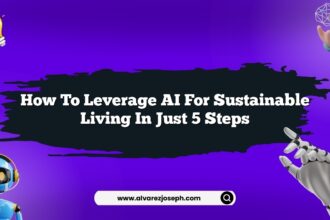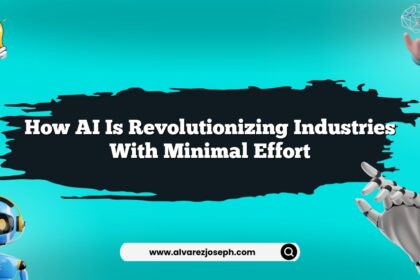You know, when people talk about AI, it can sound super complex and, honestly, a bit intimidating. But, let’s not kid ourselves… it doesn’t have to be that way. The truth is, harnessing the power of artificial intelligence doesn’t require a PhD in computer science or a ton of spare time. In just 30 minutes a day, you can start leveraging AI advancements to boost productivity, learn new things, or even just make your life a little easier. Seriously, it’s that simple.
So, whether you want to streamline your work, get smarter about decision-making, or just explore a new hobby, I’m here to break it down for you. I’m talking about actionable tips and real-world applications that won’t leave you scratching your head. Let’s dive into how you can get started with AI without the fluff.
Understanding What AI Can Do for You
First things first, what do we mean when we say "AI"? It’s a vast ocean of technology, but at its core, it’s about machines mimicking human intelligence. We’re talking about things like machine learning, natural language processing, and even automation. The cool part? AI is everywhere. From that friend who keeps pestering you about their latest NFT project to the virtual assistants that help you manage your calendar, it’s part of our daily lives.
Now, here’s the deal: AI can be both a best friend and a frenemy. On one hand, it can save you time and effort. On the other, it can feel like yet another thing to learn. But trust me when I say it’s worth the effort. Imagine being able to automate mundane tasks or get personalized recommendations for almost anything you want. I mean, who doesn’t want that?
Setting Up Your Daily 30-Minute AI Routine
Alright, enough of the chit-chat. Let’s talk about how to structure your 30 minutes. I’m going to break this down into three segments: Learning, Implementing, and Experimenting.
1. Learning (10 Minutes)
First, you gotta get your head around what’s out there. Spend about 10 minutes diving into learning resources. Here’s what I suggest:
- Podcasts: There are tons of them. Some great ones are "AI Alignment Podcast" or "The AI Effect." They’re casual and packed with info.
- YouTube Channels: Check out channels like "Two Minute Papers" for bite-sized insights on the latest AI research. It’s like getting a shot of espresso—quick and effective!
- Blogs: Websites like Towards Data Science or MIT Technology Review have articles that break down concepts in a friendly way.
You don’t need to read War and Peace. Just skim through and pick what catches your eye.
2. Implementing (10 Minutes)
Alright, let’s put some of that knowledge to work. Here’s where the fun begins. Depending on your interests, you can focus on different areas. Here are some quick ways to integrate AI into your routine:
-
Task Automation: Use tools like Zapier or IFTTT. These platforms let you automate tasks between apps. Want to save email attachments to your Dropbox? Done. Need to post to social media automatically? Easy peasy.
-
Writing Assistance: Tools like Grammarly or ChatGPT can help you with writing. They’re not perfect, but they can suggest improvements and save you time. Just a heads up, don’t let them do all your thinking for you!
-
Data Analysis: If you’re into numbers, check out Google Sheets with its AI features. You can automate data insights or learn how to use functions like QUERY without pulling your hair out.
3. Experimenting (10 Minutes)
Now, it’s playtime. Here’s where you can get your hands dirty. Try something new! Play around with different AI tools. Here are a few ideas:
-
Explore AI Art: Try tools like DALL-E or DeepArt. You can create unique images just by typing prompts. It’s wild what you can come up with!
-
Chatbots: Build your own chatbot using tools like Landbot or Chatfuel. It’s a fun challenge and could come in handy for small business owners.
-
Learning Platforms: Try out AI-driven learning platforms like Duolingo or Khan Academy. They adapt to your learning pace—super cool, right?
Overcoming Common Barriers
Let’s get real for a second… Starting with AI can feel overwhelming. I get it. You might be thinking, “Where do I even start?” or “Isn’t this all just for techies?” Well, here’s my take.
-
Fear of Complexity: Sure, some AI tools are complex. But many are user-friendly. Don’t be afraid to click around and explore. YouTube is your friend if you hit a snag.
-
Time Constraints: You’re busy, I get it. But this is just 30 minutes a day. That’s less time than you spend scrolling through social media.
-
Skepticism: I’ve been there. Not everything works as advertised. But don’t throw the baby out with the bathwater. Test things out. If it doesn’t work for you, move on.
Real-World Applications of AI
Alright, let’s wrap this up with some juicy examples of how everyday folks are using AI.
Personal Finance
AI tools like Mint or Personal Capital can analyze your spending habits and even suggest ways to save money. They crunch the numbers for you. You just sit back and enjoy the savings.
Mental Health
Apps like Woebot use AI to chat with you about your feelings. It’s like having a therapist in your pocket. While it’s not a substitute for professional help, it can be a comforting companion to help you process your thoughts.
Content Creation
Ever heard of Canva? This tool uses AI to help you design graphics. You don’t need to be a design whiz to make something that looks professional. It’s user-friendly and can help you create everything from social media posts to presentations.
The Future of AI
I’m excited (and a little scared) about where AI is heading. Here’s a bold prediction: In the next few years, we’re going to see a significant shift toward AI personalization. We’re talking about AI that knows you so well it can anticipate your needs. Imagine an AI that curates content you actually want to see or suggests products that fit your style. Cool, but also a little creepy, right?
Quick Summary
- AI is accessible: Anyone can start using it.
- Spend 30 minutes a day for a tangible impact.
- Focus on Learning, Implementing, and Experimenting.
- Use task automation and writing assistance to boost productivity.
- Try out AI art and chatbots for fun.
- Overcome barriers like complexity and time constraints.
- Real-world uses include personal finance and mental health support.
- Expect a future of hyper-personalization in AI.
Frequently Asked Questions
What are the best AI tools for beginners?
There are plenty, but I’d recommend starting with Grammarly for writing assistance, Zapier for automation, and Canva for design. They’re user-friendly and practical.
Can I learn AI without technical knowledge?
Absolutely! There are tons of resources tailored for non-techies. Start with podcasts and YouTube channels. You can learn a lot in a short time.
How can AI help in my daily life?
AI can streamline your tasks, help with budgeting, assist with writing, and even provide emotional support through chatbots. It’s about finding what fits your lifestyle.
Is AI really worth the hype?
That depends. For many, yes. It can save time, increase efficiency, and even spark creativity. But it’s not a magic bullet—be ready to explore what works for you.
Are there any downsides to using AI?
Sure, there are some risks. Over-reliance on AI can stifle creativity, and not every tool is perfect. Always use your judgment and be critical of the results.
What’s the future of AI?
Expect more personalization and integration into everyday life. AI is going to get smarter, and hopefully, it’ll make our lives easier, not more complicated.
And that’s a wrap! Now get out there and start your AI journey. You’ve got this! 🚀












